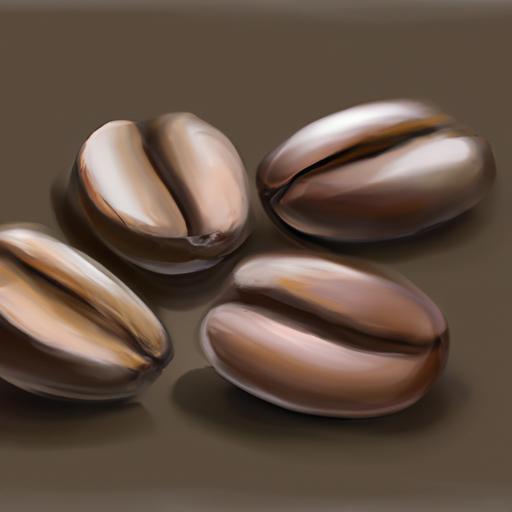Have you ever wondered where coffee beans come from? Do coffee beans actually come from cherries, or is that just a myth? Well, you’re in luck! In this article, we will explore the truth behind this question and uncover the fascinating journey that coffee beans take before they reach your cup.
From the coffee cherry to the harvesting process and the roasting of the beans, we will uncover the truth about where coffee beans come from.
So, sit back, relax, and let’s get ready to explore the answer to the question: Do coffee beans come from cherries?.
Table of Contents
Short Answer
Yes, coffee beans come from cherries.
The coffee bean is actually the seed of a cherry-like fruit that grows on trees in tropical climates.
These fruits are harvested and the beans are extracted from the center of the fruit.
The beans are then dried and roasted to create the coffee we know and love.
What are Coffee Beans?
Coffee beans are the seeds of the coffee plant, and they are the primary ingredient in brewing a cup of coffee.
Coffee beans are found inside the coffee cherry, which is the fruit of the coffee plant.
The coffee cherry is soft, red or purple in color, and contains two seeds, which are the coffee beans.
The beans are then dried, roasted, and processed to create the coffee that we know and love.
When fully ripe, the coffee cherry has a sweet taste that is similar to a raisin.
After being harvested, the coffee cherry is dried, which removes the water content and reveals the two beans inside.
These beans are then separated and removed from the cherry, and the roasting process begins.
During the roasting process, the coffee beans are heated to temperatures up to 500F, which brings out the flavor and aroma of the beans.
The beans are then ground and brewed to create the coffee that we enjoy.
Although coffee beans are the main ingredient in coffee, the process of transforming them into the beverage we know and love is a complicated one.
From the harvesting of the coffee cherry to the roasting of the beans to the brewing of the coffee, there is a lot that goes into the process.
A true cup of coffee is more than just the beans, it is the result of a complex process that takes knowledge, skill, and dedication.
Where Do Coffee Beans Come From?

The answer to the question, Do coffee beans come from cherries? is a resounding yes! Coffee beans are the seeds of the coffee tree’s fruit, which are typically a deep red or purple color.
Coffee beans are actually two beans that are connected together, which is why they are sometimes referred to as coffee beans.
The process of turning coffee cherries into the coffee beans we know and love starts with harvesting the cherries.
Once the cherries are harvested, they are dried in the sun or a drying machine until they are a dark brown color.
After the cherries are dried, they are processed to remove the outer husk and extract the beans.
The final step in transforming the cherries into the coffee beans is roasting the beans, which is what gives them the flavor and aroma we associate with coffee.
It is worth noting that not all coffee beans come from coffee cherries.
Some coffee beans are actually processed from the leaves or stems of the coffee tree, which are then dried and roasted.
This is a process called green coffee and is becoming increasingly popular in specialty coffee shops and home brewers.
So, the next time you enjoy a cup of coffee, you can think back to the coffee cherries that were harvested, dried, and processed to create the coffee beans you are now enjoying!.
The Coffee Cherry
When it comes to coffee, many people are surprised to learn that the source of the beverage comes from a small red or purple cherry.
The coffee cherries are grown on the coffee tree, a small evergreen shrub or tree that is typically found in tropical climates.
The cherries contain two coffee beans that are connected together, and when processed and roasted, those beans are what we recognize as coffee.
The coffee cherries are typically harvested by hand, as the coffee tree produces only a limited number of cherries at a time.
Once the cherries are picked, they are then dried, usually in the sun or in a drying machine, which removes the excess moisture from the cherries.
This process helps to bring out the flavor of the coffee beans, as well as to prepare them for the roasting process.
Once the cherries are dried, they are then processed to extract the coffee beans.
This is done by removing the outer layer of the cherry, which leaves the coffee bean exposed.
The beans are then separated, and what is left is the two coffee beans that we recognize as coffee.
The final step in transforming the beans into the beverage we know and love is roasting.
During this process, the beans are heated to high temperatures, which brings out the flavors and aromas of the coffee.
Roasting also helps to preserve the beans, as well as to make them easier to grind for use in brewing.
So, the next time you grab a cup of coffee, remember that it all started with a small red or purple cherry!.
The Harvesting Process

The harvesting of coffee cherries is an important step in the process of making coffee.
The cherries are typically hand-picked from the branches of the coffee tree, though some farmers use machines to help with the process.
During the harvest, only ripe cherries are selected and the unripe cherries are left on the tree to continue ripening.
The cherries are then moved to a processing facility, where they are sorted and cleaned, before being dried.
At the processing facility, the cherries are put through a sorting machine which separates them according to their size and shape, discarding any which are damaged or of poor quality.
Once the cherries have been sorted, they are put through a cleaner which removes any leaves, twigs, or other debris from the cherries before they are sent for drying.
The drying process is essential in order to remove any moisture from the cherries so that they are ready for processing.
The cherries are typically spread out in a thin layer on a large tarp and left to dry in the sun.
The cherries must be monitored closely to ensure that they dont dry too quickly, as this can lead to a loss of flavor.
Once the cherries have been dried to the desired moisture level, they are ready to be processed.
The final step of the harvesting process is to remove the beans from the coffee cherries.
This is done by first removing the outer layer of the cherry by a process known as hulling.
The beans are then extracted and sorted once more, before being packaged and sent to the roaster.
Drying Coffee Beans
The process of turning cherries into the coffee beans we know and love takes several steps.
After the cherries are harvested, they need to be dried before they can be processed.
There are two primary methods for drying coffee beans.
The first is the most traditional method, called natural or dry processing.
This process involves spreading the cherries on large patios or platforms in the sun.
The cherries are raked and turned regularly to ensure even drying.
This method is typically used in places with dry climates, as the cherries can dry naturally without the need for additional energy.
The second method is called washed or wet processing.
With this method, the cherries are soaked in water and then put through a pulping machine to remove the skin and pulp of the cherry.
The beans are then spread out on patios or platforms to dry.
This method is typically used in wetter climates, or when the cherries need to be dried quickly.
After the cherries have been dried, they need to be hulled and polished.
Hulling removes the parchment layer and any remaining pulp from the beans.
Polishing removes the silver skin from the beans.
This step must be done carefully to maintain the quality of the beans.
Once the beans have been polished, they are sorted by size and shape.
Finally, the beans are ready to be roasted.
Roasting is the process that transforms the beans into the beverage we know and love.
It is during the roasting process that the beans develop their flavor and aroma.
Roasting also helps to remove any remaining moisture, giving the beans their characteristic crunch.
So there you have it the truth revealed! Coffee beans come from the fruit of the coffee tree, which is a red or purple cherry.
The cherries must be harvested, dried, hulled, polished, and then roasted in order to yield the beans that we enjoy in our favorite coffee drinks.
With this knowledge, you can now enjoy your coffee with a deeper appreciation.
Extracting the Beans

The process of extracting the beans from the coffee cherry can be labor-intensive and time-consuming, depending on the method used.
The two main methods of extracting the beans are the wet method and the dry method.
In the wet method, the coffee cherries are first placed in water in order to separate the beans from the fruit.
The beans are then dried and milled to remove the outer layer of the bean.
In the dry method, the cherries are left to dry on the tree or on raised beds in the sun.
Once dry, the beans are milled to remove the outer layer.
The beans are then sorted by size and density, and the best beans are selected for roasting.
Both the wet and dry methods can produce high-quality coffee, but the wet method is often considered superior due to the intense flavor and aroma of the beans.
Roasting the Beans
The process of roasting coffee beans is the final step in transforming them into the beverage we know and love.
Roasting coffee beans is a delicate process that requires careful attention and precise timing.
The roasting process begins with sorting and cleaning the beans, which removes any debris or foreign objects.
Next, the beans are heated in a roaster at temperatures between 300 and 600 degrees Fahrenheit.
The length of time the beans are roasted is determined by the desired flavor profile.
For example, light roasts are roasted for a shorter amount of time, while dark roasts are roasted for a longer amount of time.
As the beans are heated, they swell and change color, releasing oils and aromas.
The beans are then cooled quickly to stop the roasting process.
The final step is to package the beans for sale.
The process of roasting coffee beans is an art and a science.
Professional roasters take into account factors such as the type of bean, the origin of the beans, and the desired flavor profile when roasting the beans.
Roasting coffee beans requires expertise and experience, as it is easy to over- or under-roast the beans, which can lead to an unpleasant flavor.
Roasting the beans is the final step in transforming the beans into the beverage we know and love, so it is important to get it right.
Final Thoughts
It’s amazing the journey that a coffee bean goes through before it reaches your cup! A coffee bean is actually a seed of the coffee cherry, which is harvested, dried, and processed before the beans can be roasted.
Now that you know the truth about where coffee beans come from, why not try your hand at roasting your own? Challenge yourself to explore the nuances of flavor that come from roasting coffee beans and experience the full flavor of coffee beans firsthand.

